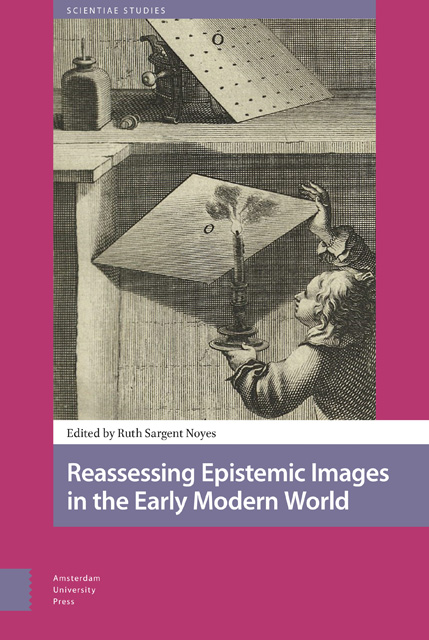Book contents
- Frontmatter
- Dedication
- Table of Contents
- 1 Prologue: For a Metaphorology of Engraving: From Epistemic Images to an Imaged Epistemology
- 2 Introduction: Pittura filosofica: Etching Galileo’s Sunspots and the Discursive Field of Early Modern Epistemic Images
- Part 1 Approaches to Print Matrices
- Part 2 Imprints as Instruments
- Part 3 Imprint, Knowledge, and Affect
- Bibliography
- Index
5 - Digital Resuscitation of the Officina Plantiniana’s Woodblock Collection: Goals, Approaches, and Results
Published online by Cambridge University Press: 15 June 2023
- Frontmatter
- Dedication
- Table of Contents
- 1 Prologue: For a Metaphorology of Engraving: From Epistemic Images to an Imaged Epistemology
- 2 Introduction: Pittura filosofica: Etching Galileo’s Sunspots and the Discursive Field of Early Modern Epistemic Images
- Part 1 Approaches to Print Matrices
- Part 2 Imprints as Instruments
- Part 3 Imprint, Knowledge, and Affect
- Bibliography
- Index
Summary
Abstract
This chapter addresses an often-overlooked aspect of the study of early modern illustrations: the woodblock matrices themselves. This objectbased approach provides new insights, exposing elements that are not visible when looking at the printed image. Investigation of the recessed areas of the block can render information about the artist’s hand, often cancelled out in the print. The Museum Plantin-Moretus in Antwerp owns an impressive collection of nearly 14.000 woodblocks, used in the Officina Plantiniana, which is now digitized. The material research of the blocks benefits from digitization through multi-image comparison, high resolution zooming on miniscule details and manipulation of size, colour and contrast to enhance particular features. This article discusses the work-in-progress of the digitization process and the first findings.
Keywords: woodblock, printing matrices, digital methods, Plantin-Moretus
Introduction: The Plantin-Moretus Museum and Its Woodblock Collection
This chapter reviews the aims, methods, and preliminary results of the recent digitization project for the Officina Plantiniana’s woodblocks in the typographical collections of the Plantin-Moretus Museum, Antwerp. An extraordinarily rich but long overlooked primary resource, the blocks stand to benefit from recent research investigating the role of material culture and visual representation in early modern science by examining the emergence, production, and role of printed images as tools in scientific texts. Making an online clearinghouse of digital images of the blocks linked to basic descriptions in an online catalog, the project facilitates open access to this exceptional and unique collection to enable emerging object-based research that investigates not merely the printed image, but also the matrices used to print them, shedding new light on the Press’s history specifically and early modern printing and knowledge production more broadly.
Christoffel Plantin was born in France c. 1520 and was taught printing and book-binding before moving to Antwerp in 1548 for religious reasons, where he opened his printing office the Officina Plantiniana in 1555. Appointed Prototypographe or chief printer of the city in 1570 by the king of Spain, he was regarded as the period’s foremost printer. By 1575, his operations were based in buildings that now constitute the Plantin-Moretus Museum and boasted sixteen presses, 32 printers, twenty compositors, three proof-readers, and one unskilled laborer, in addition to numerous skilled artisans to whom he contracted out work.
- Type
- Chapter
- Information
- Reassessing Epistemic Images in the Early Modern World , pp. 109 - 128Publisher: Amsterdam University PressPrint publication year: 2022

